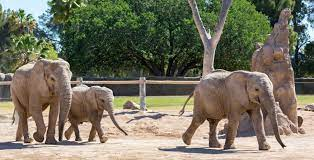Do Zoos Cause Animals More Harm Than Good?
Many people say that zoos are bad for animals’ mental and physical health. Being in a zoo doesn’t always work out for certain species. For example, most large carnivores like lions and tigers that are bred in captivity later die if they’re ever released back into the wild. In most cases, endangered animals are helped tremendously by the conservation that zoos do. The main cause of extinction today is due to degradation of habitat. Zoos are the main factor in preserving the extinction of many endangered animal populations. Without zoos, black-footed ferrets, the red wolves, the Przewalski’s wild horse, and the California condors would all be extinct, including many more species. Bringing these endangered animals into a safe environment protects them from poachers, habitat loss, and starvation. Zoos educate the public about animals and foster an understanding of other species. Zoos also create an economic advantage in some neighborhoods that might not have one. For example, the Elmwood park zoo in Norristown Pennsylvania grossed nine million dollars in 2019.
Back in the 1800’s zoos would give an animal a toy and a cage and call it a day but that has changed. In an article about the pros and cons of zoos, it said “The modern zoo is hyper-aware of the dietary and physical requirements that animals need to maintain proper health.” Activities are arranged for animals to help keep them mentally alert. Putting animals in captivity doesn’t fully dissolve the problem of hunting or migration, but it does eliminate the boredom, deterioration, and eventual degradation of the animal at the zoo. In exchange for species’ freedom, Zoos are keeping many species from going extinct. In the last five centuries over 900 species have gone extinct. Zoos are an absolute necessity for the conservation of endangered species.
Miles Benner, Grade 12. His interests are Driving and Writing. Miles Plans on going to Bucks County Community college after high school. He will major...





